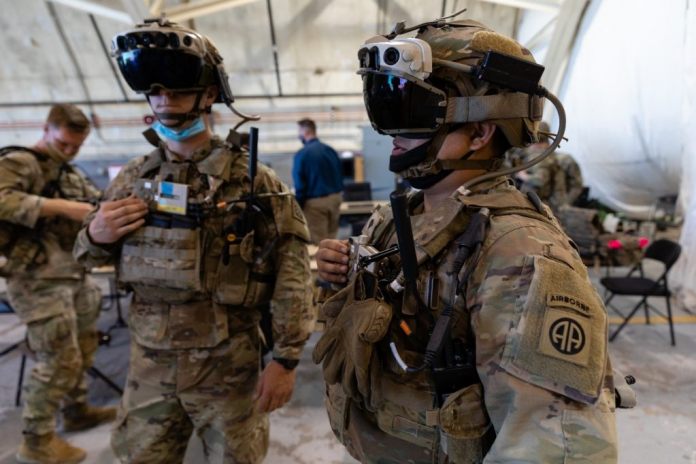The U.S. Army has approved the next development phase for the Integrated Visual Augmentation System (IVAS), expanding the contract between the military and the Microsoft HoloLens division.
Microsoft's HoloLens IVAS is a mixed-reality headset that gives soldiers enhanced situational awareness and capabilities. It is based on HoloLens technology and augmented by Microsoft Azure cloud services.
The U.S. Army and Microsoft have collaborated for over two years on this mixed reality headset project. The Army's top civilian associate in acquisitions has authorized Microsoft to advance with this potential $22 billion initiative.
Soldiers' Feedback Leads to Adjustments
Soldiers from the 1st Battalion, 87th Infantry Regiment, 1st Infantry Brigade Combat Team, 10th Mountain Division tested the Integrated Visual Augmentation System on Microsoft's HoloLens headset. Their feedback pinpointed issues with the fit and feel of the 1.1 prototype headsets. In response, the HoloLens team at Microsoft introduced significant modifications. The updated 1.2 version features a hinge-like flip-up helmet mount, a counterweighted battery at the helmet's rear, and options for controller placement along the user's rib cage.
It has been a rocky road for the project, which has been in danger of being torn up on several occasions. Last March, we reported on Microsoft's concern that its $22bn HoloLens contract with the U.S. Army is not going to plan. Reports suggested the US Army was preparing to change the terms of the contract and take fewer devices.
Microsoft's contract with the US Army to provide HoloLens IVAS headsets has faced a lot of opposition from its own shareholders and workers. They claim that the IVAS system will be a weapon that will cause deaths in combat. They want a thorough and impartial investigation of the deal. However, Microsoft has tried to persuade its shareholders to not pursue any review.
Technical Progress and Upcoming Plans
Brig. Gen. Christopher Schneider informed Army Times that upcoming steps will center on merging the device with tactical cloud computing. This integration promises to introduce a plethora of new tools and software to the device. Both the Program Executive Office-Soldier and Microsoft are responsible for formulating tactical edge cloud computing solutions. They also will assess the feasibility of a cost-effective production strategy. If all goes well, the production phase could kick off by fiscal year 2025.
Capabilities of the Upgraded Device
The revamped HoloLens headsets will offer functionalities such as relaying virtual terrain mapping captured by microdrones, enhanced night vision with overlay features, and advanced navigation and wayfinding. An application store will also be integrated, allowing users to download various job-assisting apps. Schneider highlighted, “We can get input; it's straightforward to craft an app to deliver to the soldier something they desire.”






